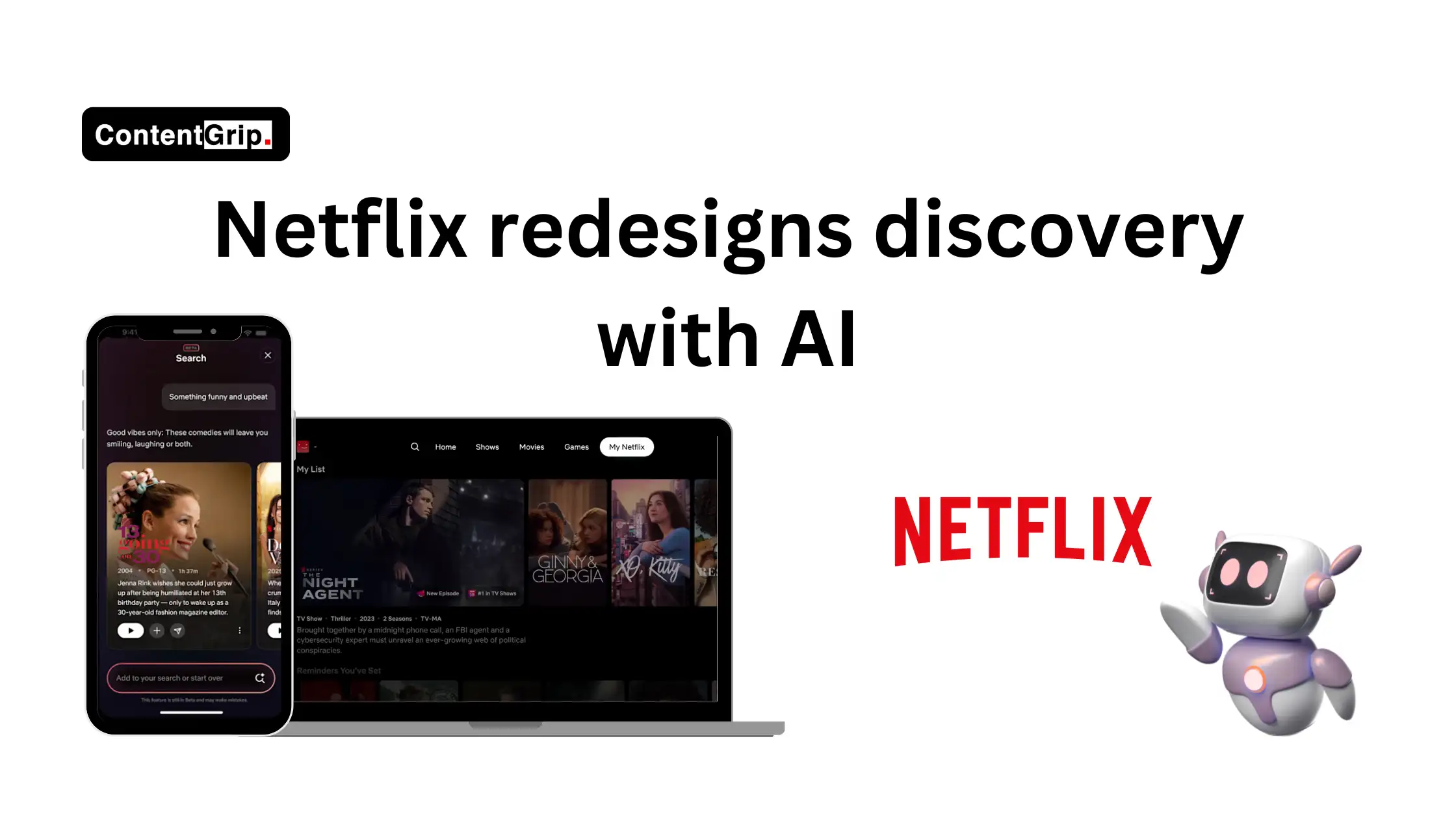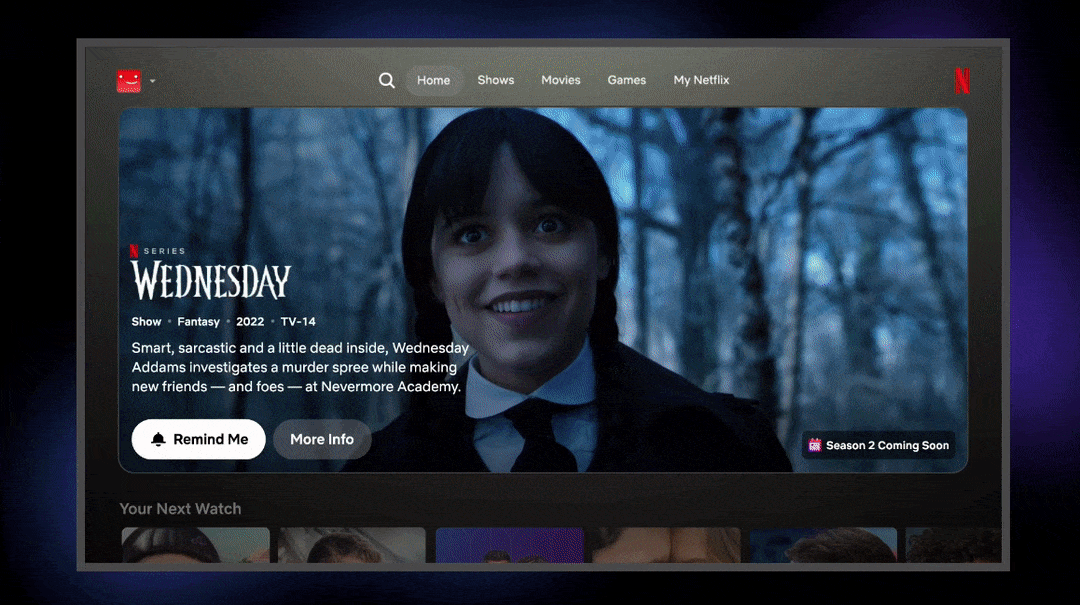Netflix redesigns discovery with AI: how marketers should respond
With conversational search and short-form previews, Netflix is adapting to how people find content. Marketers, take note.

Netflix just dropped a sweeping UX refresh across its mobile and TV platforms, and it’s not just a visual update. From ChatGPT-style conversational search to TikTok-inspired short video previews, the streaming giant is clearly leaning into AI and vertical media to help users find what they want—faster and more naturally.
For marketers, this signals more than just a tech upgrade. It’s a glimpse into how digital entertainment—and by extension, content discovery—will be reshaped in an AI-first, mobile-native world.
This article explores what’s new, what it means for your strategy, and how marketers can adapt.

Short on time?
Here’s a table of contents for quick access:
- What’s new in Netflix’s latest update?
- AI meets entertainment: inside the ChatGPT-powered search
- TikTok-style feed: discovery meets dopamine
- What marketers should know

What’s new in Netflix’s latest update?
The updates—unveiled by Chief Product Officer Eunice Kim and Chief Technology Officer Elizabeth Stone—include a redesigned TV homepage, repositioned navigation elements, and smarter visual cues to guide user decisions. For example, metadata like “#1 in TV Shows” or “Emmy Award Winner” now pops up more prominently.
On mobile, the platform is experimenting with a vertical scroll feed—a familiar look to anyone who’s spent time on TikTok or Instagram Reels. These short video previews let users quickly browse content, tap to watch, or share with friends.
AI and short-form UX: Netflix is rethinking discovery
Two of Netflix’s most eye-catching updates—its ChatGPT-powered search and TikTok-style vertical feed—signal a major shift in how users interact with content platforms.
On the one hand, the new conversational search tool, currently in beta for iPhone users in select markets like Australia and New Zealand, allows people to use natural prompts like “something uplifting and funny” instead of browsing by genre or keyword. It’s powered by OpenAI’s ChatGPT and designed to make Netflix feel less like a static interface and more like an entertainment concierge.
At the same time, the platform is testing a short-form vertical feed on mobile—surfacing snackable video clips from its catalog to mimic the rapid, dopamine-driven discovery UX made popular by TikTok, Reels, and YouTube Shorts. Viewers can quickly scroll, tap to watch the full title, or add it to their list.
Together, these features reflect Netflix’s push to meet users where they are—blending AI-driven personalization with mobile-native design. And for marketers, they underscore a bigger trend: content discovery is no longer about search bars and menus. It’s about conversation and visuals, not categories and titles.
The takeaway? If your brand’s discovery journey still relies on static design or text-heavy UX, it’s time to rethink how people find and interact with what you offer.
What marketers should know
Here’s what this means for content strategists, entertainment marketers, and brand leaders:
1. Search is becoming conversational—are you ready?
Netflix’s AI-powered search is a signal flare: audiences increasingly expect intuitive, dialogue-like interactions with platforms. Marketers should explore how conversational AI can be integrated into their own touchpoints—be it site search, customer service, or product discovery.
Try this: Use tools like Dialogflow or Forethought to pilot natural language interfaces for your brand.
2. Vertical video is the new default
Netflix’s short-form scroll interface follows the same logic driving TikTok and YouTube Shorts. If your video strategy still relies heavily on landscape content, it’s time to rethink format and flow. Use previews, teasers, and bite-sized trailers to grab attention.
Recommended tools: Kapwing, InVideo, and VEED make short-form content creation easier across formats.
3. Content discovery is the battlefield
With everyone fighting for attention, the user journey—from scroll to stream—is becoming more compressed. That’s why content labeling and surfacing (like Netflix’s “#1 in TV Shows” badges) will matter more. Marketers should apply this thinking to e-commerce, newsletters, or even landing pages.
Ask yourself: How easy is it for your audience to identify what’s most popular, trending, or recommended?
4. AI and UX must work hand-in-hand
Netflix’s update shows that AI is not a standalone gimmick—it’s part of a broader UX rethink. Brands should stop treating gen-AI as a feature and start treating it as a utility that improves how people navigate and experience content.
Final thoughts
Netflix’s update isn’t just a facelift—it’s a directional shift. AI, vertical UX, and conversational UI are shaping the next phase of digital discovery. Marketers should take note and begin building strategies that align with these new user behaviors.
Because if your audience is searching with AI and scrolling like TikTok, your brand better be ready to show up the right way.




